12 Best Shade Trees For Wisconsin
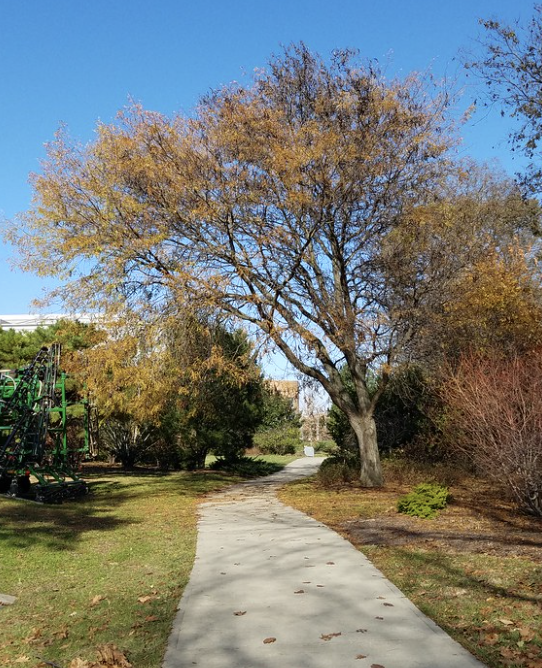
Wisconsin is home to a wide variety of beautiful and hardy trees that provide shade throughout the year. While all of them can provide good shade, some are particularly well-suited to the Wisconsin climate.
Wisconsin's hardiness zones are 3b, 4a, 4b, 5a, and 5b, encouraging the growth of bur oak, green ash, American beech, American elm, and similar species.
Here's an overview of the top 12 best shade trees for Wisconsin.
Table of Contents
- 12 Best Shade Trees In Wisconsin
- White Ash (Fraxinus americana)
- Thornless Honeylocust (Gleditsia triacanthos form inermis)
- Sugar Maple (Acer saccharum)
- Slippery Elm (Ulmus rubra)
- Silver Maple (Acer saccharinum)
- Sawtooth Oak (Quercus acutissima)
- Red Maple (Acer rebrum)
- Ohio Buckeye (Aesculus glabra)
- Green Ash (Fraxinus pennsylvanica)
- Bur Oak (Quercus macrocarpa)
- American Elm (Ulmus americana)
-
American Beech
(Fagus grandifolia)
- Final Say on the Shade Trees of Wisconsin
- FAQs
The Top 12 Best Shade Trees For Wisconsin
Saw, timber and pine have dominated New Hampshire forests forever. However, other trees, such as red maple, yellow birch, and white pine, are also common in the region.
White Ash (Fraxinus americana)
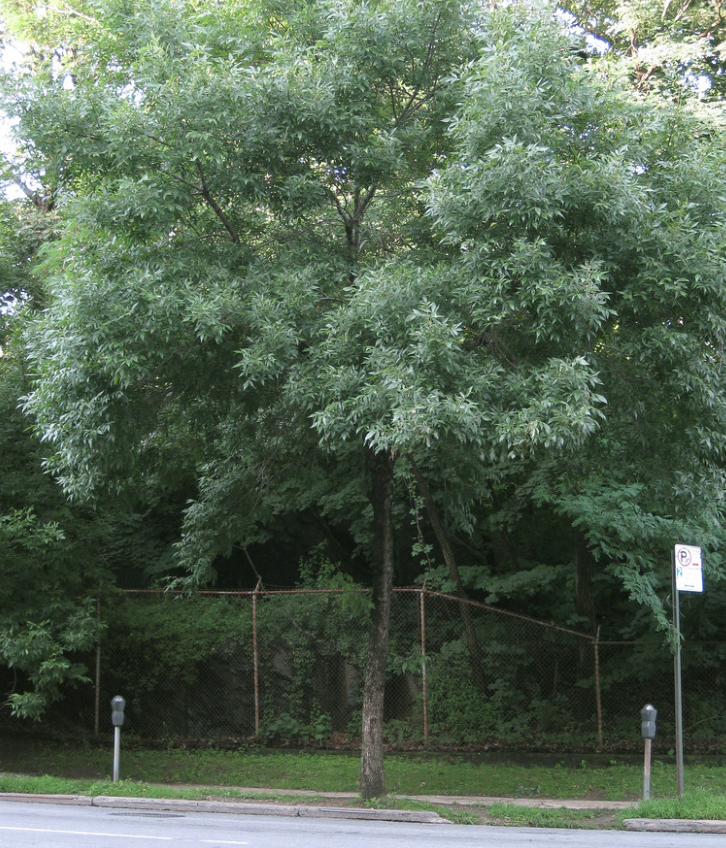
Photo Credit: Virens
Other Common Names: Biltmore white ash
Growing Zones: 4 - 9
Average Mature Height: 50 to 80 feet
White ash or Biltmore white ash is a medium to large deciduous tree native to eastern North America. Growing up to 80 feet tall, the white ash tree stands out with its distinctive diamond-shaped leaves composed of five to nine leaflets.
It is a fast-growing, long-lived tree that is often planted as an ornamental or shade tree in yards. White ash is a popular choice for making furniture, musical instruments, and sports equipment due to its strength and beautiful grain.
The white ash tree is resistant to many of the common diseases that affect other similar trees, but it can succumb to anthracnose, a fungal disease. The fungus causes brown spots and lesions on the leaves that can stunt growth. Pruning infected branches and providing good air circulation around the tree will help reduce fungal spread.
Thornless Honeylocust (Gleditsia triacanthos form inermis)

Photo Credit: Dan Keck
Other Common Names: Sweet locust
Growing Zones: 3 - 9
Average Mature Height: 30 - 70 feet
The Thornless Honeylocust is called so because it has a very low rate of producing thorns on its branches. It grows in USDA Growing Zones 3 through 9 and reaches an average mature height of 30 to 70 feet.
Its dense canopy provides ample shade, making it a great choice for residential yards and parks. It can tolerate a wide range of soil conditions. However, it prefers well-drained loams. The tree produces yellow to greenish flowers in early summer and is an attractive sight.
The fruit of the Thornless Honeylocust is edible and can be used to make jams, jellies, and syrups. It also provides food for wildlife. However, some cultivars may be fruitless. The tree is also fairly drought-resistant once established and can withstand urban conditions with ease.
Sugar Maple (Acer saccharum)
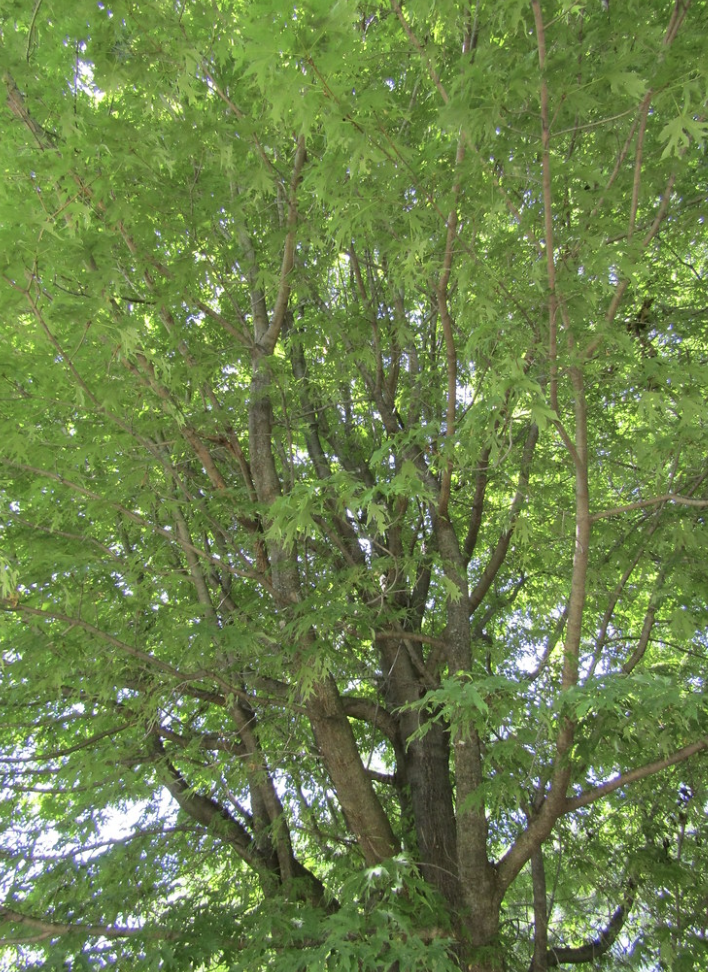
Photo Credit: Lenora
Other Common Names: Rock Maple, Hard maple
Growing Zones: 3 - 8
Average Mature Height: 60 to 75 feet
Sugar maple is one of the most popular shade trees in Wisconsin. It has a broad crown and is known for its high-quality hardwood. The tree is fairly slow growing and can live up to 300 years in the right environment. Sugar maple has yellow-green foliage in the summer, which turns an intense orange or red in the fall.
Sugar maple produces a samara, which is a seed that is encased in papery wings. The seeds are dispersed by wind and can travel long distances before taking root.
Since the tree has hard and strong wood, it's used in making flooring and furniture. The wood is also used to make baseball balls and musical instruments.
Slippery Elm (Ulmus rubra)
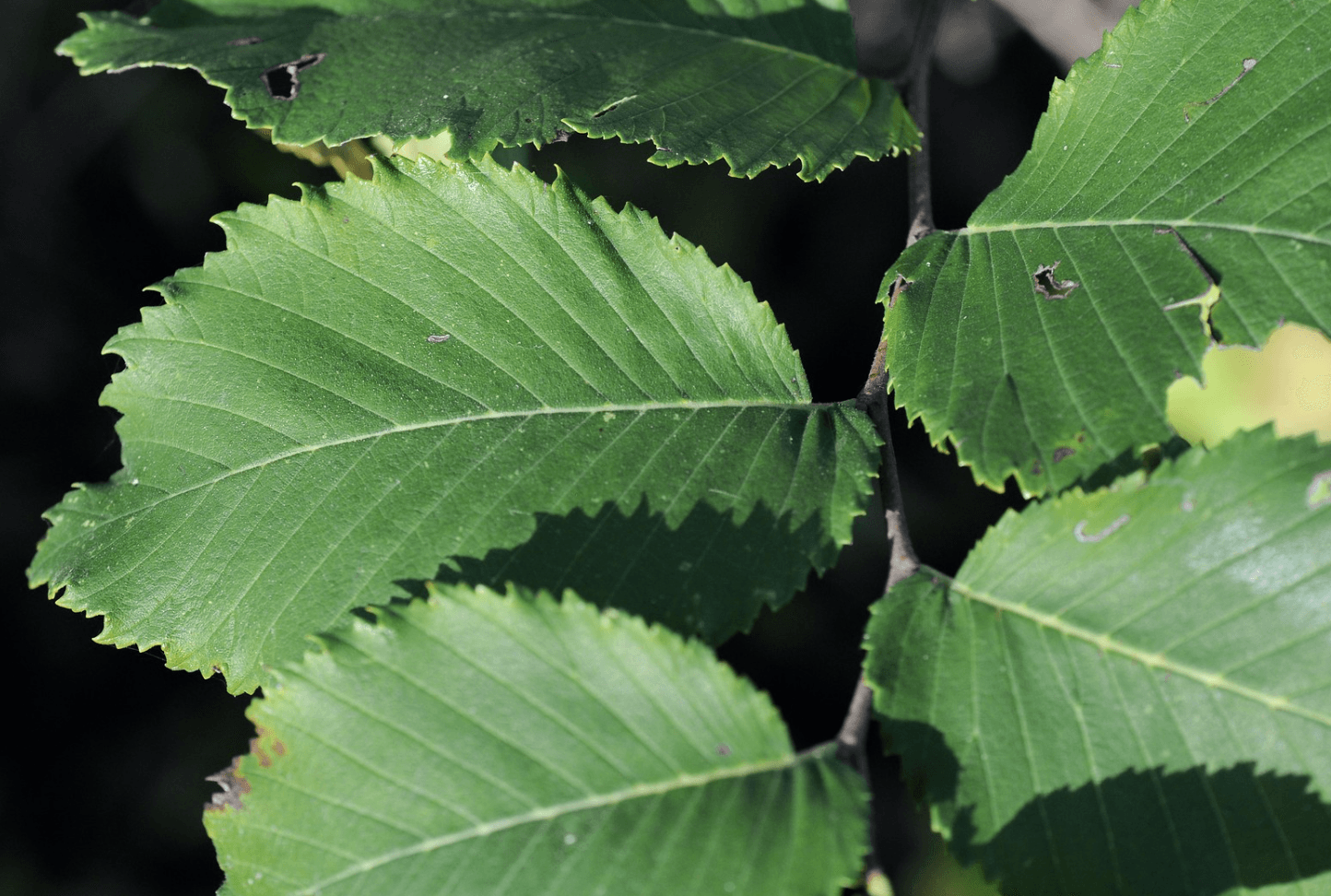
Photo Credit: Sonia Hill
Other Common Names: Orme Rouge, Red Elm, Sweet Elm
Growing Zones: 3 - 7
Average Mature Height: 50 to 60 feet
The 'slippery' name comes from the inner bark of this tree, which can be used for medicinal purposes. Slippery elm is a deciduous tree that grows best in moist and well-drained soils. It can tolerate wetter soils than most elms.
The leaves of the slippery elm are dark green and rough-textured. They can reach a length of three to four inches, turning yellow in the fall before dropping off. The bark is dark gray and deeply furrowed, with long ridges that run up and down the length.
The fruit of slippery elm is a dark brown or black drupe, about the size of a pea. It can be eaten fresh or dried and is often used in herbal teas.
Silver Maple (Acer saccharinum)
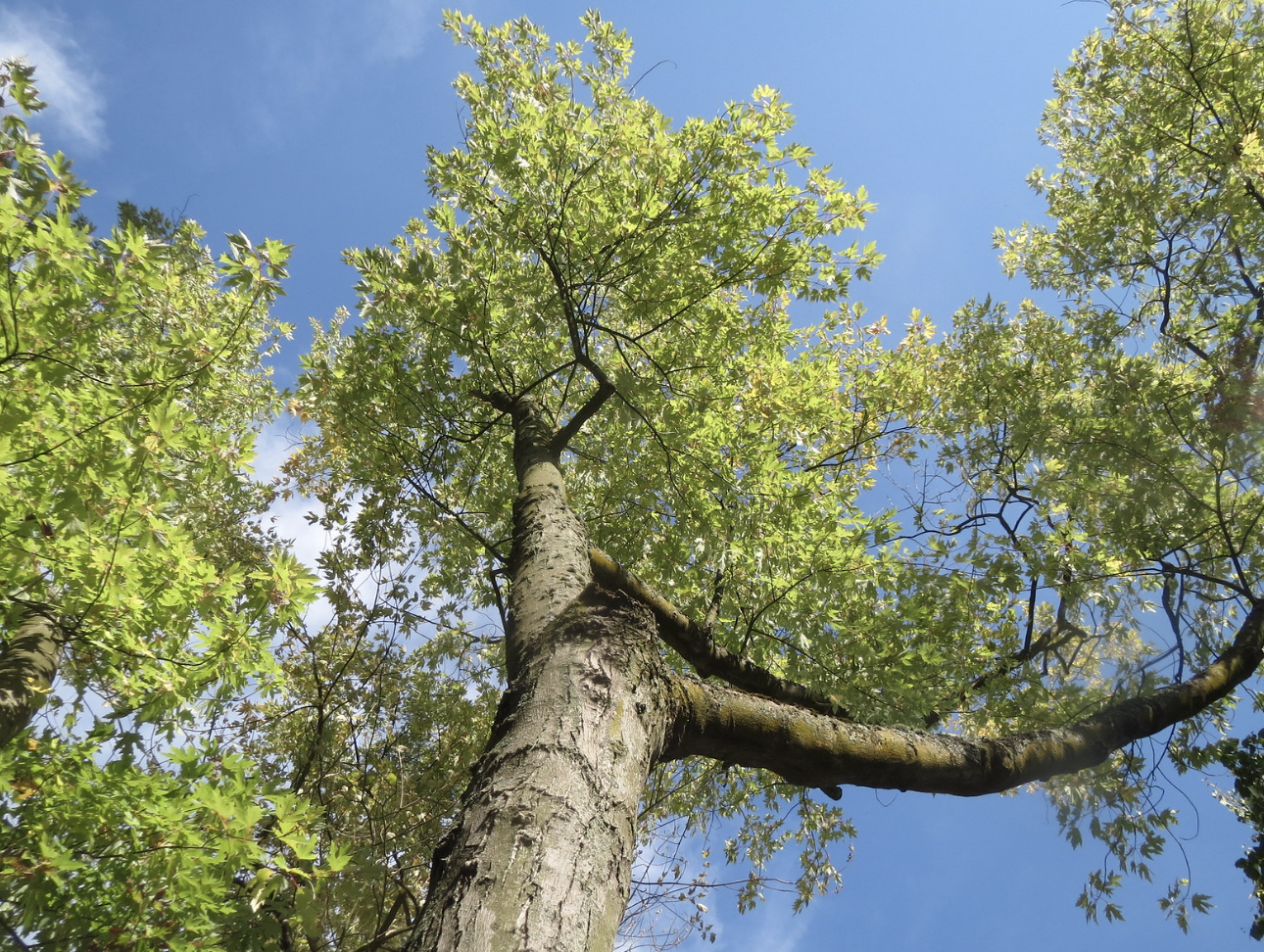
Photo Credit: Andreas Rockstein
Other Common Names: Soft Maple, River Maple, Water Maple, White Maple
Growing Zones: 3 to 9
Average Mature Height: 80 to 100 feet
When talking about the best shade trees for Wisconsin, it would be a shame, not to mention the Silver Maple. Not only is it a fast-growing tree that can provide widespread shade in no time, but its stunning silver and green foliage are sure to make it the star of any garden.
The Silver Maple tree has a rounded shape, making it perfect for yards that need a tree to fill in tight spaces. It can grow up to 80-100 feet tall and just as wide, so make sure you plan accordingly.
Its bark is gray and deeply furrowed, which adds to its unique beauty. The Silver Maple tree's leaves are bright green on top with a silvery underside, giving the tree its name. In the fall, they change to bright yellow or orange before dropping off.
Sawtooth Oak (Quercus acutissima)
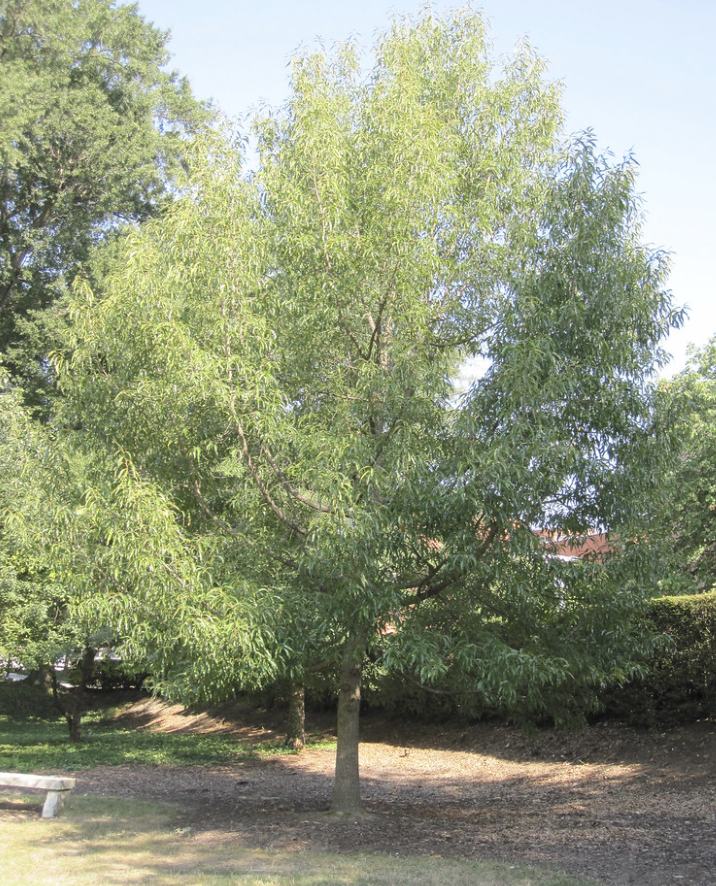
Photo Credit: Bruce Kirchoff
Other Common Names: Japanese or Asian Chestnut Oak
Growing Zones: 5 to 9
Average Mature Height: 40 to 60 feet
The Sawtooth oak is a fast-growing species native to east Asia. It can adapt to many soil types and grows best in full sun. The Sawtooth is a popular ornamental tree and has a distinctive leaf with saw-like serrated edges.
Its fall foliage displays an array of colors, including red, yellow, and orange. The tree is also known for its prolific acorn crop, which attracts wildlife such as deer, turkey, and squirrels.
It flowers in the spring and can grow up to 40-60 feet tall in a relatively short period of time. It is a great choice for homeowners looking for fast-growing trees to provide shade.
Red Maple (Acer rebrum)
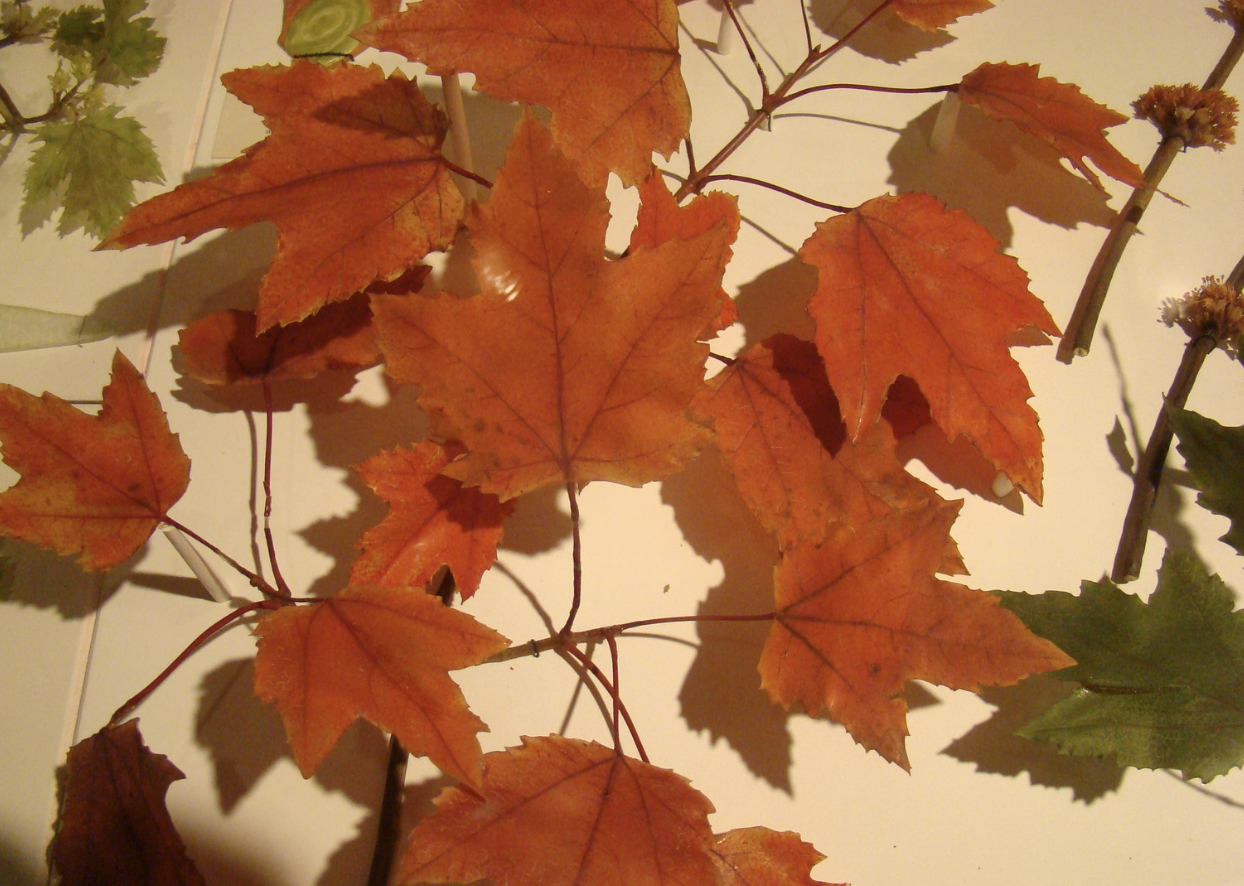
Photo Credit: Luis DaSilva
Other Common Names: Scarlet Maple, Carolina Red Maple, Swamp Maple, Soft Maple, and Water Maple
Growing Zones: 4 - 9
Average Mature Height: 60 to 90 feet
Red maple is a deciduous tree that can be found growing in wet, swampy areas of the United States. It is a fast-growing shade tree with a rounded canopy and is a popular choice for landscaping in residential areas.
Red maple has smooth, gray bark with dark green leaves that turn brilliant shades of yellow, orange, and red in the fall. It produces clusters of small, bright red flowers in spring that give way to winged seeds called samaras.
Since it's a maple tree, it can produce sap that can be used to make maple syrup. Red maple is also known for its excellent wood quality, making it a popular choice for furniture and woodworking.
Ohio Buckeye (Aesculus glabra)
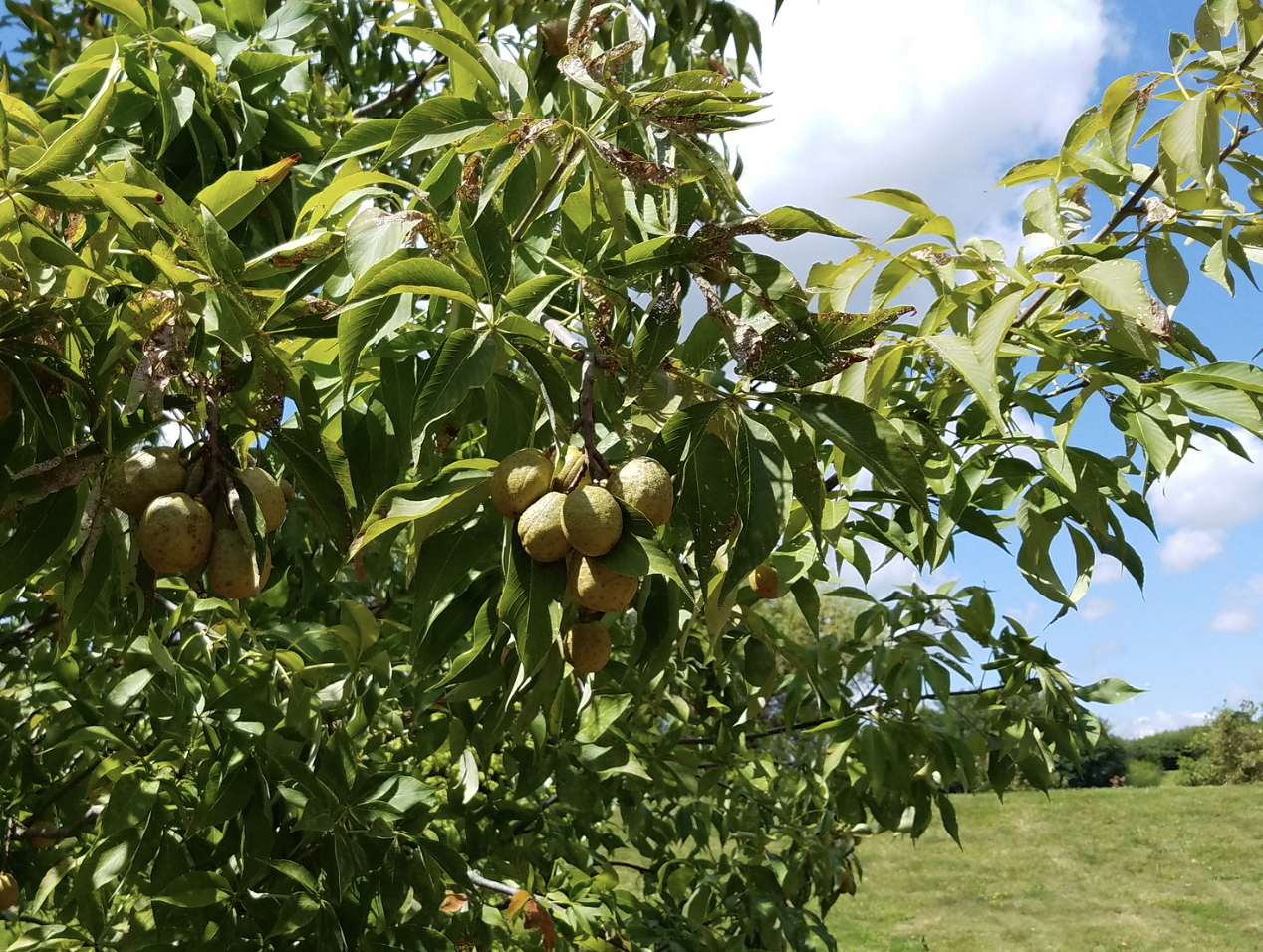
Photo Credit: Dan Keck
Other Common Names: American buckeye, Fetid buckeye, and Stinking buck-eye
Growing Zones: 3 - 7
Average Mature Height: 50 to 60 feet
The Ohio Buckeye is a beautiful shade tree that grows quickly and produces a showy display of white flowers in early summer. It prefers full sun to partial shade and does best in moist, well-drained soils.
The leaves are compound and about 8 inches long, containing 5 to 7 leaflets. It produces fruits that contain a single, hard seed encased in a prickly husk.
The Ohio Buckeye is an important food source for many animals, including squirrels, rodents, and birds. It is popular for residential and commercial landscaping due to its rapid growth rate, attractive foliage, and resistance to pests and disease.
Green Ash (Fraxinus pennsylvanica)
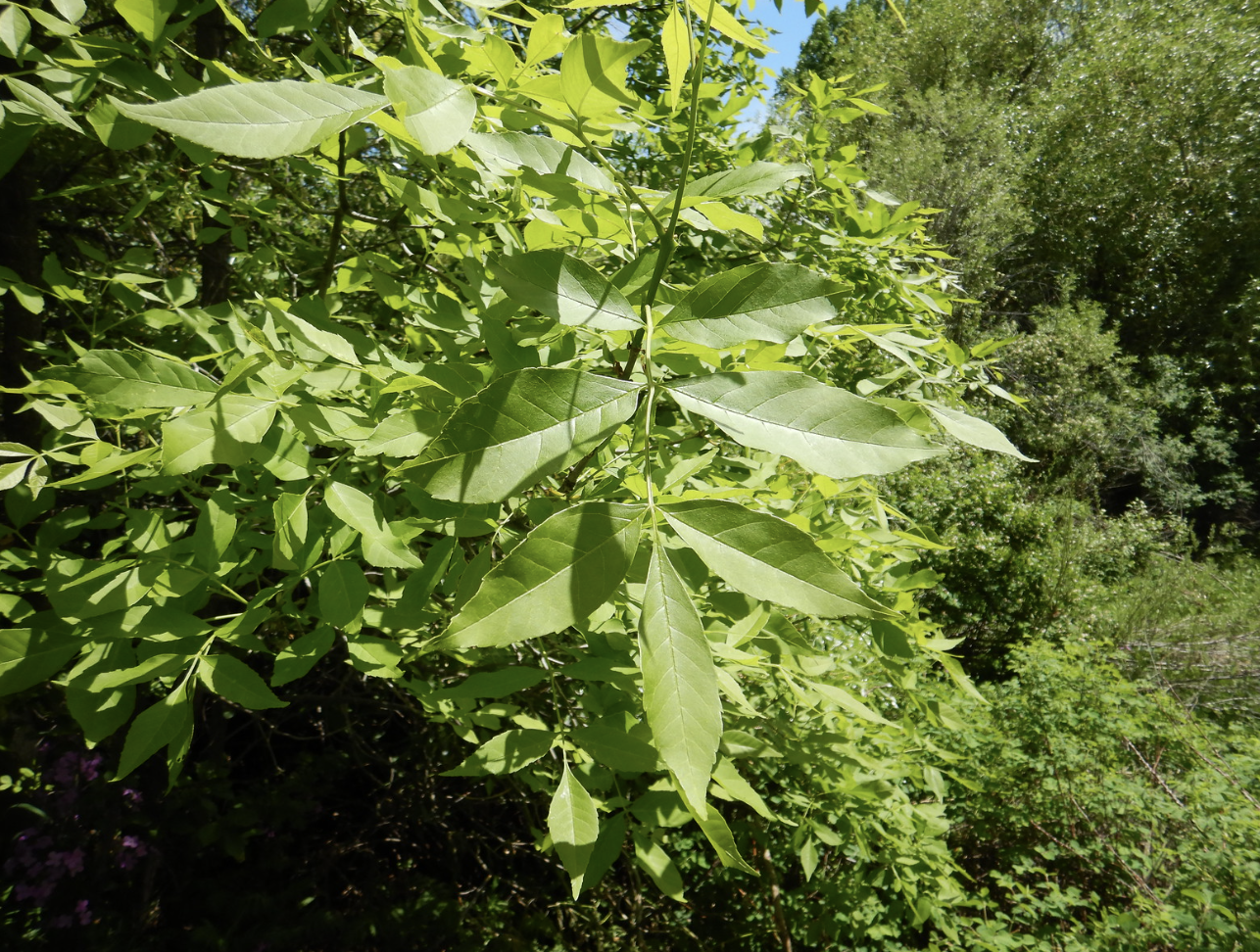
Photo Credit: Matt Lavin
Other Common Names: Red Ash
Growing Zones: 3 to 9
Average Mature Height: 50 to 60 feet
The native range of the Green Ash stretches from eastern Canada to northern Florida. It is a popular shade tree, and its fast-growing nature makes it an ideal choice for an instant canopy. It also provides good shelter from the wind, noise, and sun.
Green Ashes are commonly planted in wide lawns, buffer strips around parking lots, and parking lot islands. The tree's fruit is a samara, which is a winged seed. Each samara has two seeds that usually ripen in late summer.
The bark is smooth and gray, with shallow furrows and diamond-shaped ridges. Since the Green Ash tree is tolerant of many soil types as long as the water source is good, it makes a great choice for many climates and locations.
Bur Oak (Quercus macrocarpa)
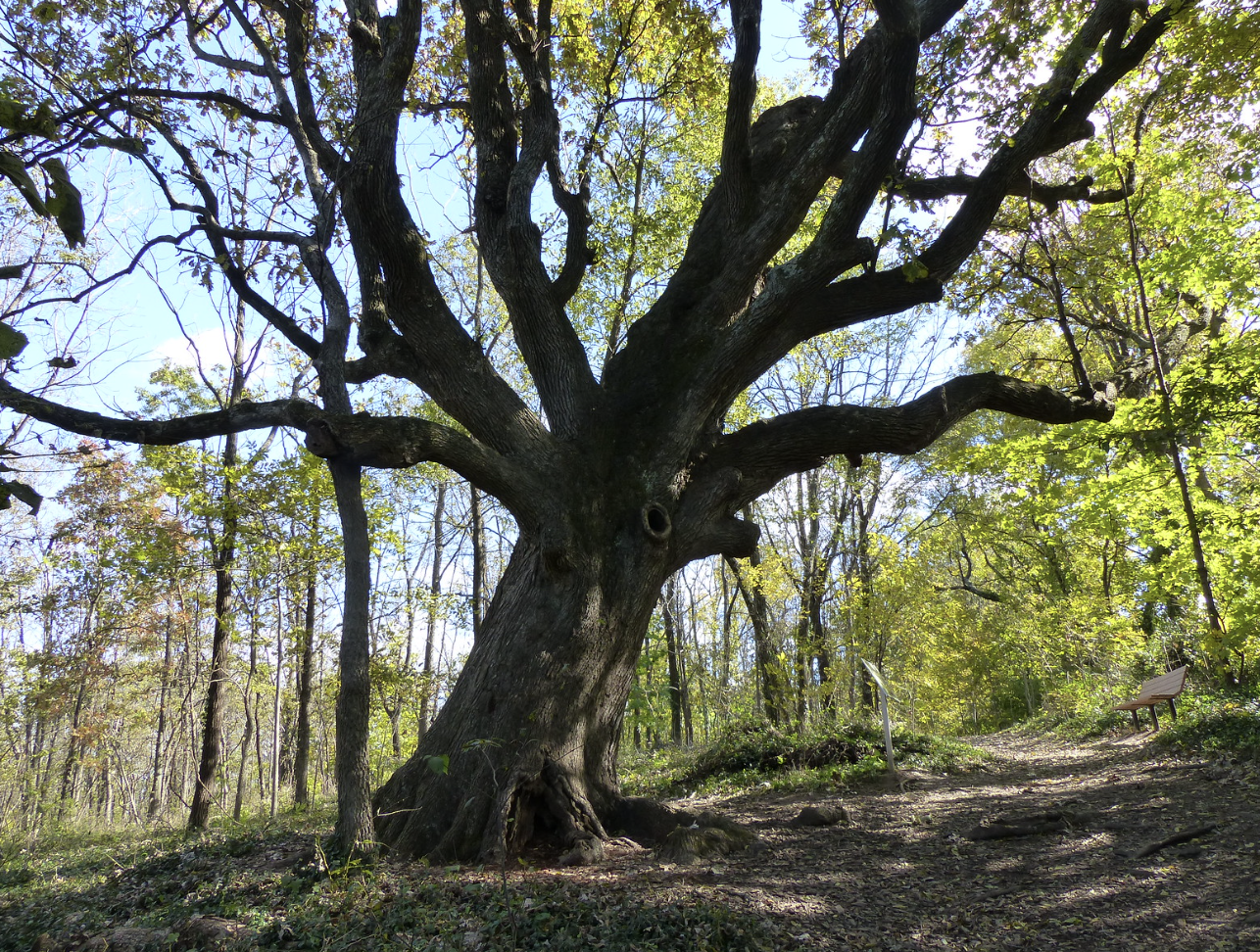
Photo Credit: Karen Roussel
Other Common Names: Mossycup Oak
Growing Zones: 3 to 8
Average Mature Height: 70 to 80 feet
Bur oak is a large, stately shade tree with an upright and spreading form. It can reach up to 70–80 feet tall and have a trunk diameter of three to four feet.
The leaves are thick, leathery, and dark green, with deep lobes and a bristle-tipped margin. The bark is dark brown to black and deeply furrowed, forming diamond-shaped patterns.
The largest bur oak tree in the world is the champion bur oak in Paris, Kentucky. It is 96 feet tall and has a diameter of eight and a half feet. Its crown spreads up to 103 feet.
Besides being a shade tree, the bur oak also provides food nutrition for squirrels. Plus, it is resistant to heat stress and air pollution.
American Elm (Ulmus americana)
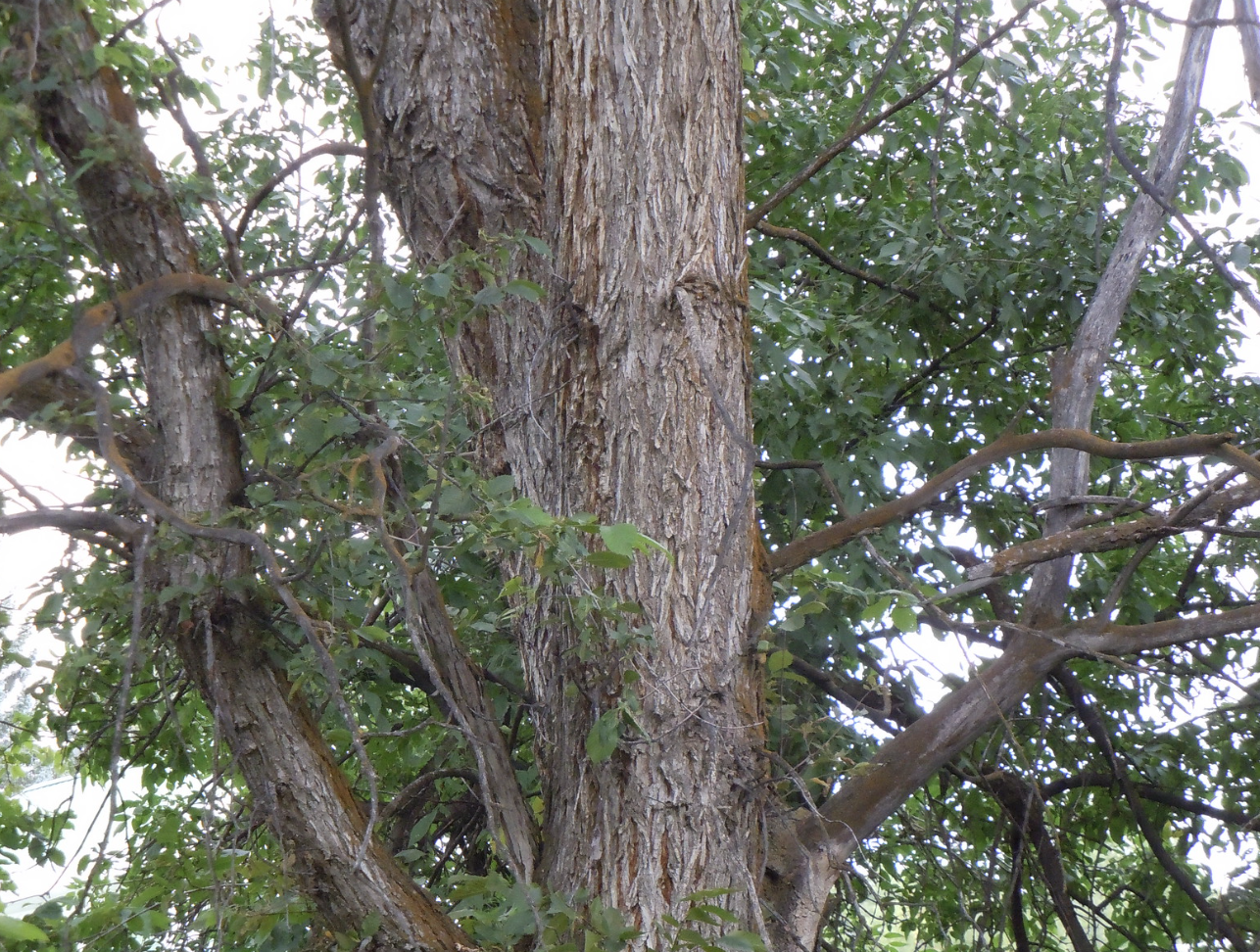
Photo Credit: Matt Lavin
Other Common Names: Water Elm, White Elm
Growing Zones: 2 to 9
Average Mature Height: 50 to 80 feet
Famous for its vase-like appearance, the American elm is another shade tree native to Wisconsin. It's a deciduous hardwood tree with an irregular, spreading crown and a trunk reaching up to three feet in diameter.
It usually grows to a height of 50–80 feet and develops light green, oval-shaped leaves with a rough texture. During fall, the foliage turns golden yellow, and then brown.
The American elm is known for its superior wind resistance and tolerates just about any soil type. It provides good shade, even in the hottest summer months, and requires little maintenance.
American Beech (Fagus grandifolia)
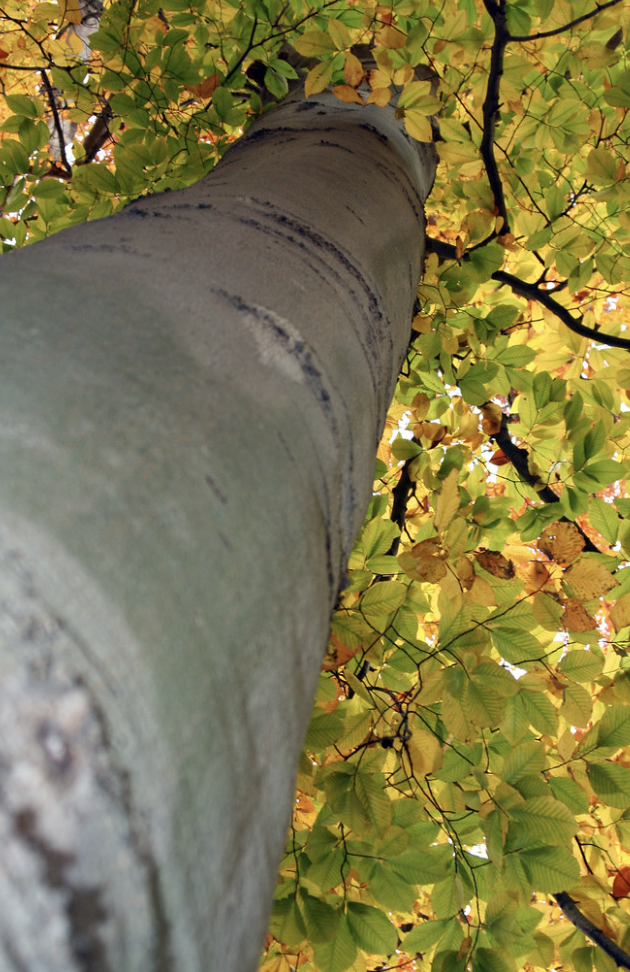
Photo Credit: Scot Martin
Other Common Names: North American Beech, Red Beech, White Beech
Growing Zones: 4 to 9
Average Mature Height: 50 to 70 feet
American beech is a large deciduous hardwood tree native to Wisconsin and other parts of the United States. It has a slow growth rate but is one of the longest-lived shade trees in Wisconsin.
American beech has smooth gray bark and produces lovely deep green foliage during spring and summer, turning yellow in fall. It's common in golf courses, the forestry industry, parks, and acreages.
It develops a dense canopy, providing excellent shade for generations, and is highly resistant to wind damage. Moreover, it yields brown beechnuts up to one inch in diameter and can be eaten. Since the American beech has dense growth, it needs plenty of space to thrive.
Final Say on the Shade Trees of Wisconsin
Wisconsin's climate facilitates the growth of a wide variety of trees to provide shade and beauty in any yard or garden, from elms and oaks to maple trees. The shade trees of Wisconsin are similar to the fast-growing shade trees of Colorado.
While the primary purpose of these trees is to provide shade, they are often also used in manufacturing furniture, musical instruments, and sports equipment. No matter your preference, you can find a tree to plant in your yard for ornamental and aesthetic use.
FAQs

Christina Hernandez
Christina has done most of her research on environmental science but recently has changed her focus towards sustainable forestry. She has a passion for the outdoors and wants to spread that passion to the world.
Join our community!
Join to receive guides, insights, and the latest gardening deals!
